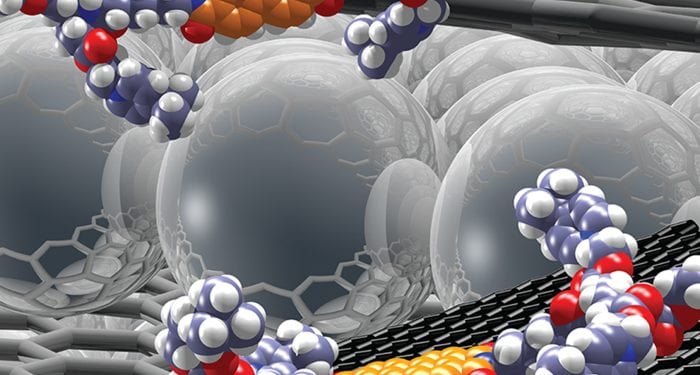 Graphene has long been known for its unique electronic structure. Its sp2 hybridization and very thin atomic thickness are properties that make graphene so special and enable many promising applications.
Graphene has long been known for its unique electronic structure. Its sp2 hybridization and very thin atomic thickness are properties that make graphene so special and enable many promising applications.
Chemical functionalization and integration into hybrid architectures has emerged as a key step to take full advantage of graphene’s enormous potential. A valuable functionalization approach is the construction of nanoparticles/graphene (NP/G) hybrids and particularly the use of reduced graphene oxide (rGO) and metal oxides such as zincoxide (ZnO)-NP.
In order to avoid several disadvantages associated with rGO, such as the high quality requirements of the GO material and limited electronic mobility within the flakes, noncovalent exfoliation of graphite is an attractive choice. One major challenge, however, is the very limited solubility and processability of unoxidized exfoliated graphene.
Hirsch, and co-workers present a strategy for the formation of novel graphene-based composites via noncovalent chemical functionalization of pristine graphite with water-soluble perylene diimide(PDI)-based surfactants. In this exfoliation process PDI-functionalized few and multilayer graphene (PDI/FLG and PDI/MLG) hybrids are generated.
The assembly of cationic PDI/FLG hybrids with anionic ZnO-NP was accomplished using a straightforward dip-coating process. With this approach, A. Hirsch, and co-workers were able to generate multilayered architectures by assembling 0D anionic ZnO-NP with 2D positively-charged PDI/FLG building blocks. The [ZnO-NP/PDI/FLG]n thin films reveal features such as an outstanding thickness, centimeter-scale homogeneity, and an interpenetrated network.
Overall, these hybrid nanoarchitectures could be particularly applied in the field of energy storage and conversion given their low cost and high processability.

















